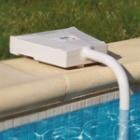Every day, about ten people die from unintentional drowning. Of these, two are children aged 14 or younger. This article will offer some tips on reducing risks and help keep your family and friends safe
How big is the problem?
- From 2005-2009, there were an average of 3,533 fatal unintentional drownings (non-boating related) annually in the United States — about ten deaths per day.
- About one in five people who die from drowning are children 14 and younger. For every child who dies from drowning, another five receive emergency department care for nonfatal submersion injuries.Children ages 1 to 4 have the highest drowning rates.
- Among children ages 1 to 4, most drownings occur in home swimming pools.
- Drowning is responsible for more deaths among children 1-4 than any other cause except congenital anomalies (birth defects).
- Among those 1-14, fatal drowning remains the second-leading cause of unintentional injury-related death behind motor vehicle crashes.
What factors influence drowning risk?
- Lack of Swimming Ability: Research has shown that participation in formal swimming lessons can reduce the risk of drowning among children aged 1 to 4 years.
- Lack of Barriers: Barriers, such as pool fencing, prevent young children from gaining access to the pool area without caregivers’ awareness. A four-sided isolation fence (separating the pool area from the house and yard) reduces a child’s risk of drowning 83% compared to three-sided property-line fencing.
- Lack of Close Supervision: Drowning can happen quickly and quietly anywhere there is water (such as bathtubs, swimming pools, and fountains), and even in the presence of lifeguards.
Tips to help you stay safe in the water
- Supervise When in or Around Water. Designate a responsible adult to watch young children swimming or playing in or around water. Supervisors of preschool children should provide “touch supervision”, be close enough to reach the child at all times.
- Learn to Swim. Formal swimming lessons can protect young children from drowning. However, even when children have had formal swimming lessons, constant, careful supervision when children are in the water, and barriers, such as pool fencing to prevent unsupervised access, are still important.
- Learn Cardiopulmonary Resuscitation (CPR). In the time it takes for paramedics to arrive, your CPR skills could save someone’s life.
- Air-Filled or Foam Toys are not safety devices. Don’t use air-filled or foam toys, such as “water wings”, “noodles”, or inner-tubes, to replace floaties for small children. These toys are not life jackets and are not designed to keep swimmers safe.
If you have a swimming pool at home:
- Install Four-Sided Fencing. Install a four-sided pool fence that completely separates the pool area from the house and yard. The fence should be at least 4 feet high. Use self-closing and self-latching gates that open outward with latches that are out of reach of children. Also, consider additional barriers such as automatic door locks and alarms to prevent access or alert you if someone enters the pool area.
- Clear the Pool and Deck of Toys. Remove floats, balls and other toys from the pool and surrounding area immediately after use so children are not tempted to enter the pool area unsupervised.
- Install a Pool Alarm. Now pool alarms can since when a small child falls into a pool. Unlike previous technologies, the new products can detect underwater movement which would prevent false alarms. A good pool alarm would is less than $600 and is a great piece of mind.

For more information on swimming pool alarms, contact you Intec representative at 800-896-1759


